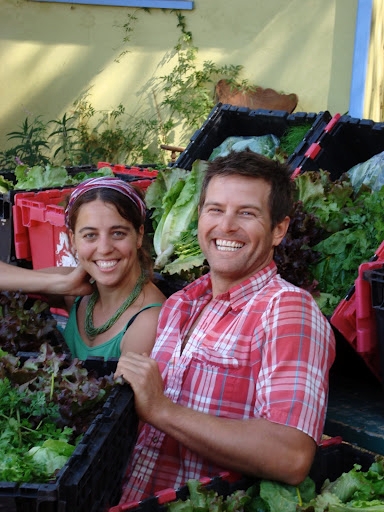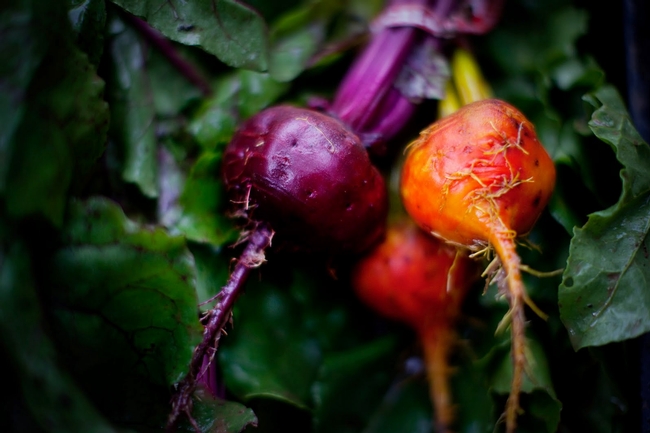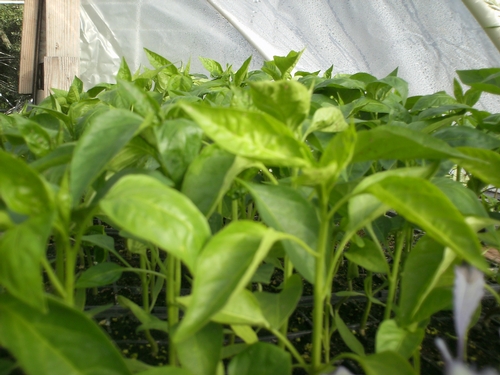
Posts Tagged: CSA
Subscribing to vegetables adds diversity to the menu

"We've heard some people say when the box gets delivered, it's almost like Christmas. The kids unpack it and they get very excited," Ryan Galt, professor in the Department of Human and Community Development at UC Davis.
But subscribers should understand being a member of a CSA is not the same as going to the grocery store for their produce. Some suggestions from the experts:
- Be aware there's more growing on vegetable farms than just carrots and potatoes
- Be willing to take risks in the kitchen
- Take time to research recipes and to cook
- Because some farmers need up-front money to start the season, you may have to pay a substantial sum before receiving produce
- Food is provided strictly in season for the farm, so don't expect asparagus in September
Galt said it's also worth asking how the farm is doing financially for committing to the CSA.
"It's hard to ask because it's not a normal conversation topic in the U.S.," he said, adding that the point of CSAs in the beginning was the community figuring out how to help small farmers survive. "Farming is extremely difficult on all ends."
Larger CSAs are typically diversified businesses
A community support agriculture farm (CSA) with a large customer base generally makes a large part of its income selling through more traditional channels, reported Grace Hood on the NPR program The Salt: What's on Your Plate.
The reporter included a comment in the story from Ryan Galt, professor in the Department of Human and Community Development at UC Davis. Galt conducted a study of CSAs in the Central Valley
"Very often the larger farms [with CSAs] actually have a smaller percent of their sales from CSAs," because they have other, bigger points of sales, Galt said. "They're more likely to rely on a huge number of different outlets: farmers markets, CSAs, direct to restaurant, direct to retail and also wholesale."
The story related the tale of Grant Farms in northern Colorado, a CSA with 5,000 clients that went bankrupt in 2012.
"The problem with our farm was not its size," said farmer/owner Andy Grant. "In fact, within the farm, the CSA was probably one of the most dynamically well run, profitable things we did." (The story didn't give the reason for the failure of the enterprise.)

A typical CSA box.
Free Courses for Young or Beginning Farmers/Ranchers
The following came to me via Paula Gaska at Mendocino Organics. It was to start up in February and I don't believe it's too late to participate. My appologies for the lateness as I was out of town when Paula sent it to me.
Grow Your Farm Business!
Establishing a farm or food business?
Taking your garden or homestead to the next level?
Need business planning help or production tips?
West Company is offering farm business development services in 2013
- No-Cost Individual Business Assessments
- No-Cost One-on-One Technical Assistance
- No-Cost Training through the Grow Your Farm Business Workshop Series
Starting in February 2013 - in Ukiah & Ft. Bragg
Intro to Business Planning and CSA
Financial Management and Enterprise Budgeting
Planning, Production, and Recordkeeping
Pricing and Distribution
Marketing I: Building Your Base
Marketing II: Growing and Retaining Members
Value-Added Production
Technology
**Complete all components of the training and receive a completion award - a cash stipend - to use toward your business plan!**
Contact Melissa Anderson, Program Coordinator at West Company (707) 964-7571 to sign up, or visit HYPERLINK "http://www.WestCompany.org" www.WestCompany.org to apply online
West Company is offering these no-cost business development services through the Strengthening CSAs by Building Capacity and Expanding Markets Project. Funding for this project comes from the United States Department of Agriculture, Farmers Market Promotion Program.
Reasonable accommodations for persons with disabilities will be made if requested at least two weeks in advance. Contact (707) 964-7571.

West company
CSA operators offer tips
With the growing popularity of community supported agriculture has come a proliferation of CSA models, with a wide variety of structure, goals, customer interactions and food products. Two different CSAs offered tips to farmers and workshop participants at the California Small Farm Conference.
On the panel were John Fonteyn and Elizabeth Del Negro, who operate Rio Gozo Farm in Ojai on 3.5 leased acres as the sole employees.
Also on the panel was Sarah Nolan, the CSA coordinator for South Central Farmers Cooperative, which farms 85 acres in Buttonwillow and delivers to locations throughout the Los Angeles basin.

“I think it’s important that we focus on the community aspect of community supported agriculture,” Fonteyn said. “I didn’t want to just put food in boxes and put them in trucks and send them away. I really wanted to live in a community.”
He believes that many CSA member also seek a sense of community and want to be part of building that community themselves. Many of their CSA members volunteer to pack boxes and visit the farm at other times too.
Fonteyn thinks that being likeable as a business person and farmer can go a long way.
“People go to you because they like you,” he said. “It’s really an attachment to us, our goals, our approachability.”
They also make concerted efforts to stay in the public eye.
“We say yes as often as we can,” Del Negro said, listing on-farm dinners, fundraisers, partnering with chefs and entertainers, speaking at events, providing farm tours and cooperating with media members as things they “say yes” to in order to maintain a strong community presence.
Rio Gozo also has an online presence, through a blog, Facebook and Twitter.
“When people search for farms, they want to see beautiful images,” Del Negro said. “When you go on our website, you’ll see deep colors, sharp photos and very few words.”
Retention
Rio Gozo initially offered monthly, seasonal and annual memberships, but have shifted away from offering monthly subscriptions — which has increased their membership retention.

The South Central Farmers Cooperative offers boxes on a one-time basis, in addition to offering monthly and seasonal subscriptions. Though they deliver about 300 boxes per week, they have about 500 customers per year receiving a box at one time or another.
“A lot of your work as a CSA is to throw that broad net out to get more people,” Nolan said. She described a 60 percent attrition rate for CSAs on average as normal.
But, she said, it’s also important to form relationships with customers, so that people who might be inclined to continuing their membership with the CSA do indeed stay on.
Since the South Central Farmers Cooperative also sells at farmers markets, Nolan said they make a point of trying to help customers self-assess whether a CSA is right for them.
“[Consumers] need to figure out — are you a CSA person or a farmers market person?” she said.
Planting
They each offered these general tips about what to grow:
- “Plant as many varieties as possible because CSA members want variety in their boxes, and if you’re not aggregating, then you need to grow it,” Del Negro said.
- “We try to grow as much as possible on our own farm,” Nolan said. “We do partner with other farms and we are very clear with CSA members about who we’re partnering with and what’s going on.”
Regulation
Dave Runsten, of Community Alliance with Family Farmers, spoke up to explain that the California Department of Food and Agriculture is currently working on issues related to direct marketing, including CSAs and how CSAs relate to food safety.
One of the concerns discussed related to food safety for CSAs is controls for “potentially hazardous foods,” which is a regulatory term that can refer to food products that cannot be safely held without temperature controls.
“So the extent that you don’t include potentially hazardous foods in your CSA box, then you won’t be subject to those handling requirements,” Runsten said.
Other concerns related to food safety and CSAs might include the CSA boxes themselves, whether they are cleaned or use a liner, and traceability of product through CSA channels.
Runsten said he maintains an email list of CSA operators in California, as a source for advice and opinions. CAFF is also planning a conference focused on CSAs in January 2013.
Back to the newsletter: Find more Small Farm News articles from our Vol 1. 2012 edition.
Planning the year ahead

I always start my planning process by figuring out how much I want to get paid for the work I do. No one should work for free and this goes for farmers, too. Many farmers work like crazy all season long and usually don’t pay themselves until the end of the year, all the while hoping that there will be some money left by the time they get to the end of the year. Don’t be one of these farmers. If you become one you will get discouraged and quit. So, make a plan to pay yourself and pay your expenses.
I like a very detailed plan that determines how much of each item to grow, what bed the crop will occupy, when to start seeds in the greenhouse, how many succession plantings to do, and on and on. The plan doesn’t have to be this detailed, but I find that the more details I cover the smoother the season runs and the less anxiety I have about meeting my commitments. There are many ways to plan your season: some farmers use pieces of paper and some use specialized spreadsheets that are available for purchase. No matter the format, the important part is that you have thought through the season and know where you are going.
Jim Muck, Jim's Produce, Wheatland
